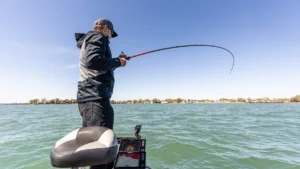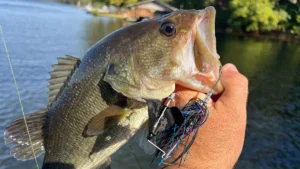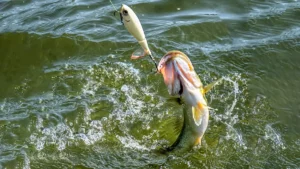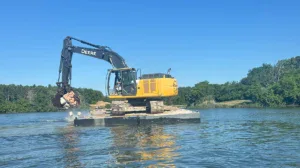Most of us have probably heard the terminology “tuning a crankbait” which is the process of slightly bending the line tie eye of a crankbait left or right to get it to run straight.
But you can also tune a spinnerbait for bass fishing. Most spinnerbaits will run true right out of the package, similarly to many crankbaits. But what you’ll notice with spinnerbaits is that they’re a lot more prone to get knocked out of line. I experience this quite often. Sometimes it happens when I careen my bait off of a dock and reel it in to find a much more compact spinnerbait at the end of my cast than I had at the beginning.
Or perhaps during the fight of a fish when swinging it in the boat or while it’s flopping around in the net, the fish bends the wire somehow and now I have to bend it back in place. When this happens, the spinnerbait can get out of line really easily, which causes it to roll in the water or list to one side. You can quickly check to see if your spinnerbait is running straight by tossing it a few feet out and then reeling it close to the surface to where you can see it. If the blades aren’t above with the hook straight below, then you need to tune your spinnerbait. But how do you do that?
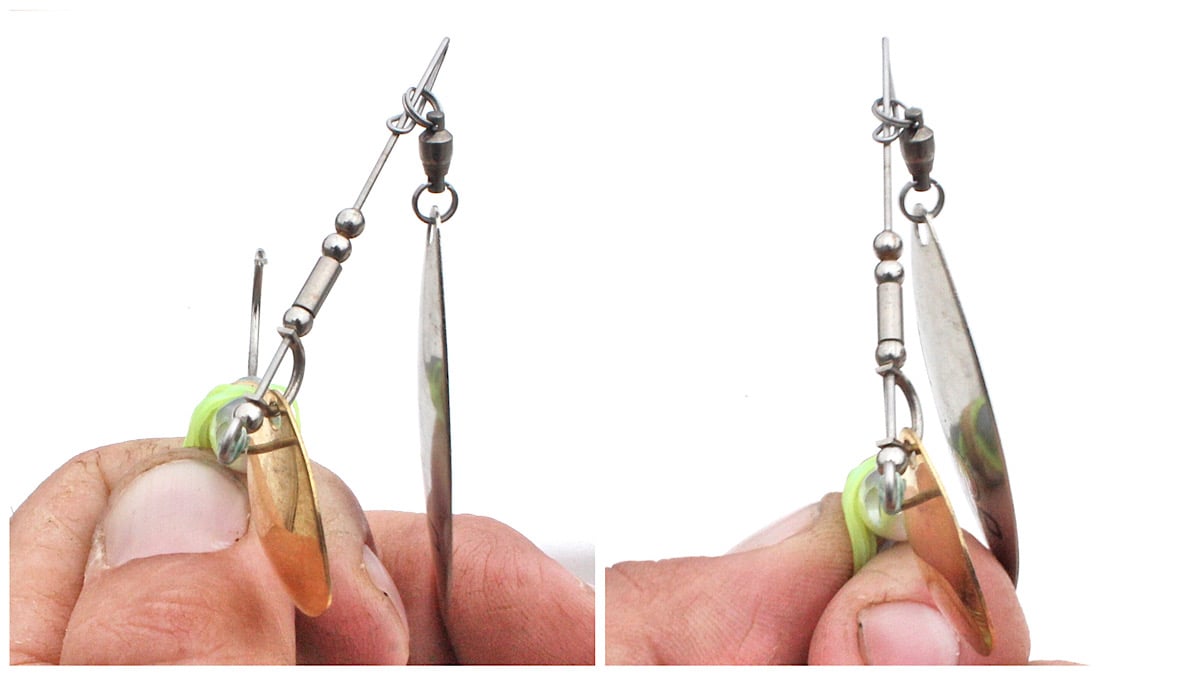
Tuning a spinnerbait
You want to look for any obvious bends in the arm to correct, from the place where the wire comes out of the head of the bait all the way to where the blades are attached. But if there aren’t any obvious bends, then the wire has likely bent by twisting and you need to twist it back to get it in line. To do so, take the spinnerbait in your hand and look straight down it from the nose of the bait, with the blade arm up and the hook below. Closing one eye, you should be able to hide the hook behind the blade arm by moving the bait back and forth a little. If the arm is bent too far to the left to do this, twist it back to the right a little.
The same applies in the opposite direction: If the arm is bent too far to the right to line the hook up with it perfectly, then bend the arm back to the left a bit. You do this by holding the head of the bait firmly in one hand and the line tie firmly in the other, then twisting the wire to try to get it back in alignment. You may have to do this, check it and then do it again a few times to get it just right. But once you can hide the hook behind the blade arm again, you should be good to go.
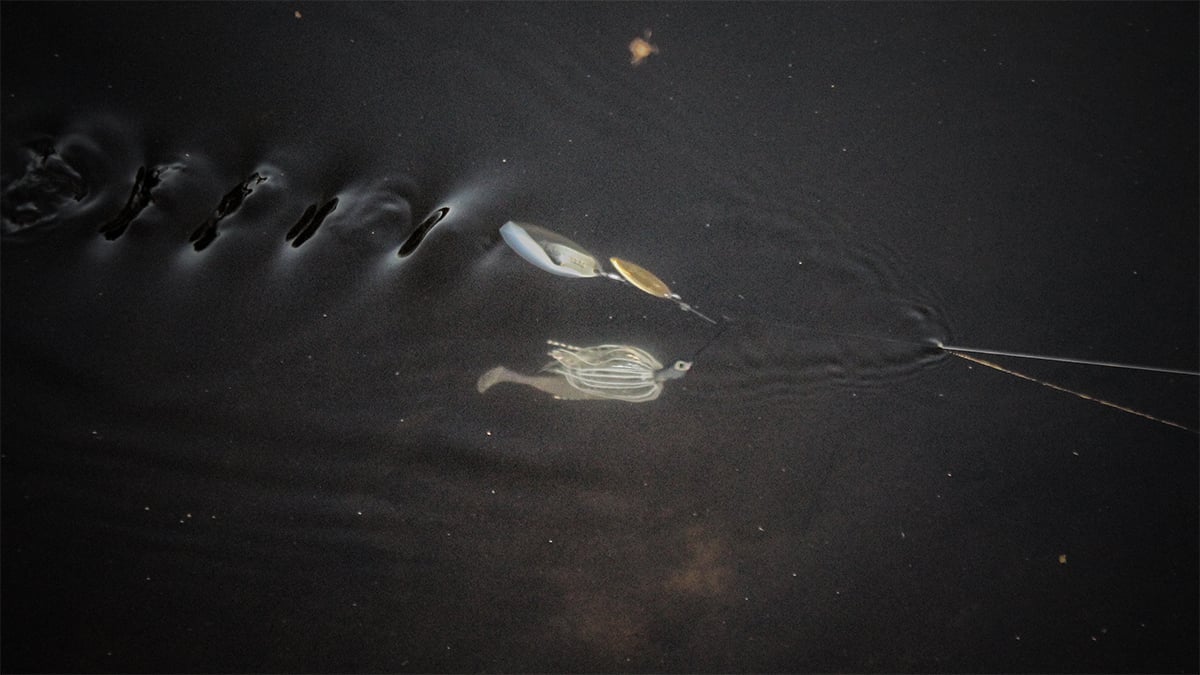
Tune the angle
There’s a second way to tune your spinnerbait as well and that’s by bending the blade arm up and away from the hook or closer down to the hook. This angle also gets out of tune when you’re fighting fish, pulling a bait undone from cover or have your spinnerbait participating in some other extracurricular activity. But it’s an easy fix as well and doesn’t have to be as exact. In fact, you can intentionally adjust this angle to modify the action of your bait even if it isn’t messed up. Let me explain.
The greater the distance between the hook and the blades, the slower the bait will fish. The narrower the gap, the faster the bait will come back through the water.
The reason is found in resistance.
There’s more resistance when the blades get out from behind one another and in more of a vertical formation. But when they’re tucked in closer to the hook, the whole bait has a more compact profile and the blades don’t have as much of a tug on them from the water.
So if I’m wanting to burn a double willow leaf spinnerbait along the surface, I can pinch the arm near the line tie of the bait to bend it and thus narrow the gap between my blades and hook. Where if I’m wanting to slow roll a double Colorado spinnerbait super shallow, I might open the arm up some to increase the distance between my hook and the blades to slow the bait down.
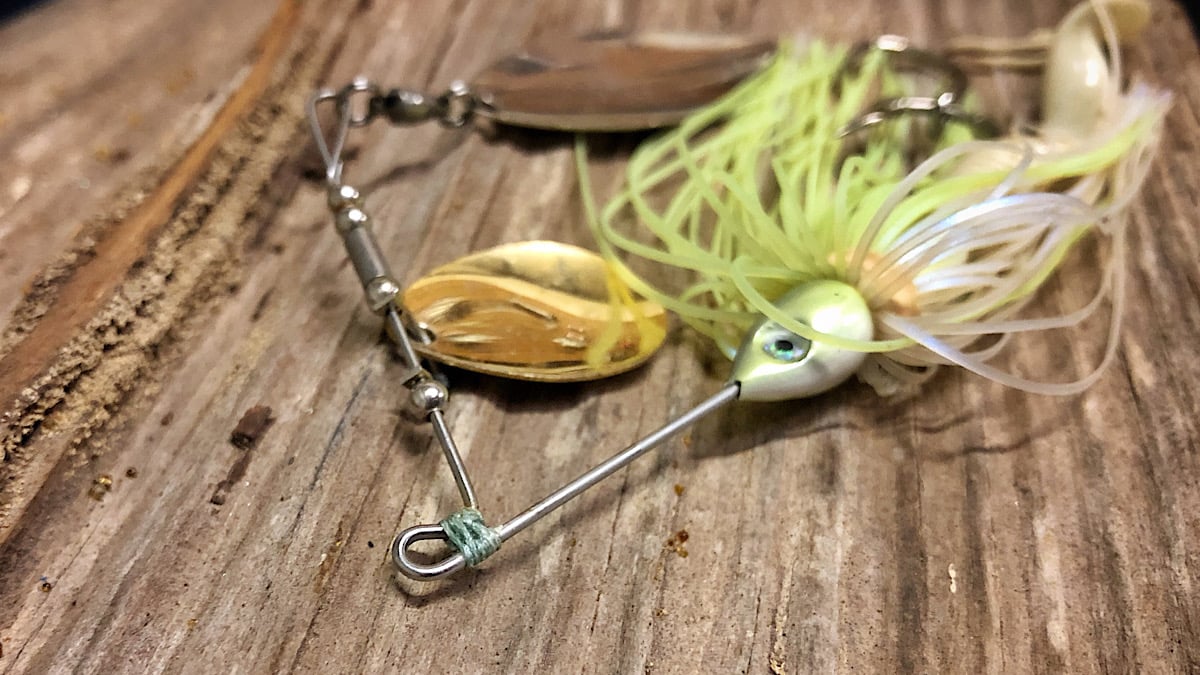
Preventative maintenance
There’s a little trick you can do on the front end to eliminate a lot of the headache of having to tune a spinnerbait a bunch. This also helps the longevity of each bait since the integrity of a spinnerbait is damaged little by little every time you bend the arm.
The same way you can bend a wire back and forth repeatedly to break it, that happens over time with a spinnerbait when you have to bend the arm back into place several times. Eventually, it will break and the wire isn’t the only thing that breaks when a big fish is the last one to bend it.
Alleviate a lot of heartache by creating an enclosed line tie for your spinnerbait with braided line. This is pretty easy to do and will ensure your spinnerbait doesn’t get bent—way out of whack, at least. Start by cinching a simple slip knot down around the line tie, then add a little super glue and start to wrap your braid around the base of the line tie several times.
Add another drop or two of glue after you’ve made about 10 wraps, make a few more and then go through the eye that you’ve now made and tie a couple basic overhand knots around the wraps of braid to hold it all together. Snip off your excess line and make sure the tag end is pressed down into the glue. And now you have a rigid reinforcing brace on the weakest part of the spinnerbait.

Final thoughts
Spinnerbaits are steady producers out on the water, but they do have their vulnerabilities. By creating a line tine with braided line, a little preventative maintenance helps keep your bait in tune and lowers the risk of breaking a bait on a big one. If and when your bait does start to lean or roll in the water, simply tune it left or right until your bait is running true again.
And consider how fast you should be fishing your bait, knowing that you can vary the speed of your lure by bending the arm to adjust the distance between the blades and the hook. Hopefully with these tips, you’ll be able to spend more time fishing and less time retuning torn up tackle.


